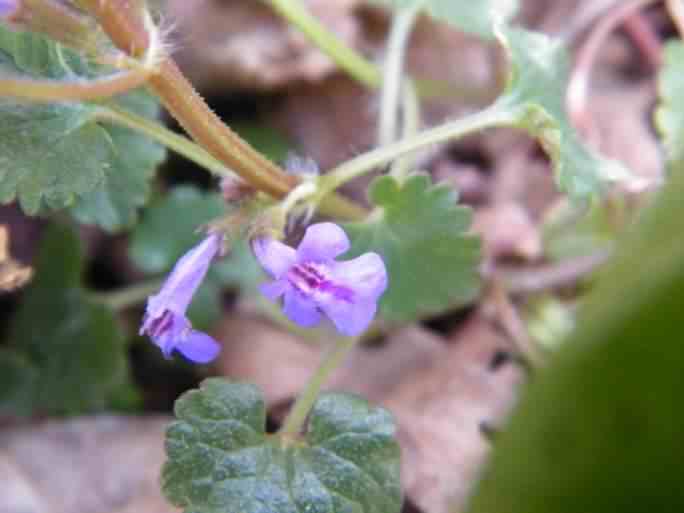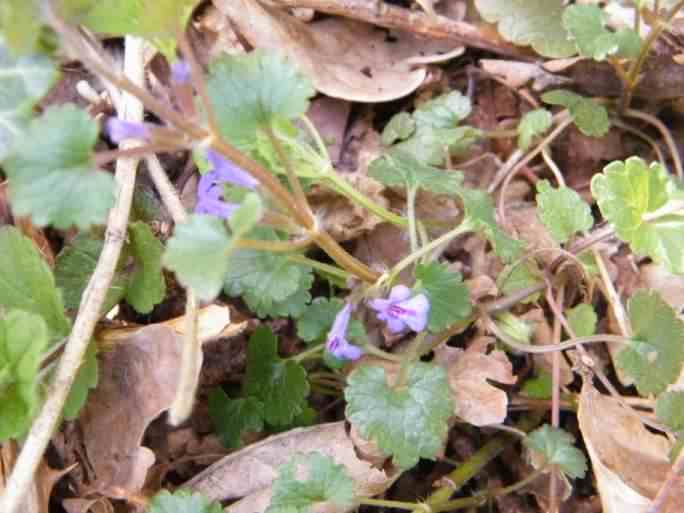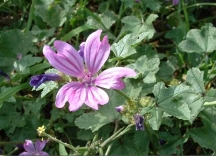

Photos ©2009–
Click any photo for a larger image
Ground Ivy


Confused with Common Mallow
 |
 Photos ©2009– Click any photo for a larger image Ground Ivy |
 |
 Confused with Common Mallow |
Ground Ivy - Glechoma hederacea
Family - Lamiaceae
Also known as - Creeping Charlie, Field Balm and Catsfoot
This plant is toxic
Ground Ivy is an aromatic perennial evergreen creeper of the mint family capable of growing in a wide variety of conditions and locales. Native to Europe and southwestern Asia. its Catsfoot name refers to the size and shape of the leaf. Identified from its round kidney shaped toothed leaves 2–3cm (0.8–1.2in) diameter with 3–6cm (1.2–2.4in) long petioles on square stems which root at the nodes. Easily confused with Common Mallow (see bottom photo), which also has round lobed leaves. Ground Ivy has square stems and leaves which are attached in the centre of the leaf, whereas Mallow leaves are attached to the stem at the back of a rounded leaf and it is not capable of rooting from the nodes. Like other plants in the mint family Ground Ivy emits a distinctive odour when damaged.
Ground Ivy flowers are bilaterally symmetrical, blue or blue–violet funnels with a purple stripe, and grow in opposed clusters of two or three flowers in the leaf axils on the upper part of the stem or near the tip and usually flowers in the spring. The flowers are hermaphroditic and are pollinated by bees, it also spreads by stolons or by seed. Like its Mint cousins it is a variable species with size being influenced by environmental conditions growing from 5–50cm (2–20in) tall, it thrives in moist shaded areas, a common plant in grasslands and wooded areas or wasteland.
BCP do not advise or recommend that Ground Ivy – Glechoma hederacea is eaten or used as an herbal remedy. Ground Ivy is apparently edible with the leaves having a bitter flavour, they can be mixed into salads, added as flavouring and they can also be cooked like spinach. It is a medicinal herb that has been used in the past to treat ear, nose, throat and digestive problems.
Site design ©1999– Brickfields Country Park - Privacy -